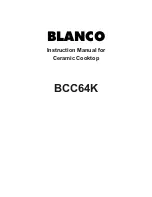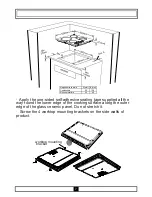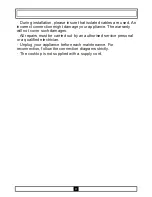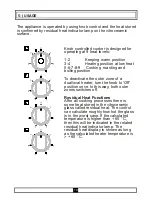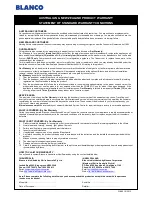
Cookware with rough bottoms should not be used since these can
scratch the glass ceramic surface. The bottom of the cookware
should be as thick and flat as possible. Before use, make sure that
cookware bottoms are clean and dry.
Always place the cookware on the cooking zone before it is
switched on. If possible, always place the lids on the cookware.
Bottom of cookware must not be smaller or larger than the cooking
zones, they should be at the proper size as indicated below, not to
waste energy.
Before cleaning the
cooktop
, first remove the plug from the
electrical supply socket. Then ensure that there is no residual heat
stored in the appliance. Vitroceramic glass is very resistant to high
temperature and overheating. If there is residual heat stored in the
appliance, the related residual heat indicator lamp is on. In order to
avoid burns, let the appliance cool down.
Remove all split food and fat with a window scrape. Then wipe the
cooktop with a suitable washing up liquid and a clean damp cloth.
Rub the appliance using a clean dry cloth.
If aluminium foil or plastic items have accidentally melted on the
cooktop surface, they should be immediately removed from the hot
cooking area with a scraper. This will avoid any possible damage to
the surface. This also applies to sugar or food containing sugar t
hat
may have
spilled on the cooktop.
In the event of other food
that may have melted
on the cooktop
surface, remove the dirt when the appliance has cooled down. Use
cleaner for glass ceramic or stainless steel when cleaning the
surface.
Do not use a dishcloth or abrasive sponge to clean the vitroceramic
surface. These materials may damage the surface.
Do not use chemical detergents, sprays or spot removers on the
vitroceramic surface. These materials may cause fire or
vitroceramic color fade. Clean with water and washing up liquid.
CORRECT
FALSE
FALSE
FALSE
11
6-) CLEANING AND CARE

